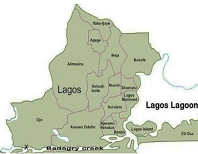Heavy Metals Analysis of Imported Scomber scombrus Sold by Cold-Rooms in Lagos State of Nigeria
Abstract
This research aimed at assessing the heavy metals concentration in imported Scomber scombrus fish samples purchased from cold rooms in Lagos, Nigeria. The samples were digested using the wet digestion method, and the concentration of Chromium (Cr), Arsenic (As), Lead (Pb), and Cobalt (Co) were determined using Atomic Absorption Spectrophotometer. Chromium (Cr) was present in twelve Scomber scombrus samples, and the level ranged from 0.004 to 0.046 mg/kg, while arsenic (As) was present in seven fish samples, with concentrations varying within 0.001 to 0.006 mg/kg. Lead (Pb) was present in eleven samples and not detected in SS5 and SS7. The concentration ranged from 0.004 to 0.062 mg/kg. Cobalt (Co) was present in seven Scomber scombrus samples, the level ranged from 0.004 to 0.046 mg/kg. However, SS3, SS10, and SS13 had lead concentrations above the maximum permissible limit (0.05 mg/kg) recommended by WHO/FAO. This study established the need for Nigerian agencies in charge of food to verify, check and ascertain the safety of imported fish before endorsing them as harmless for citizens' consumption.
Downloads

Copyright (c) 2024 Olusola D. Ogundele, Muda B. Okunade, David A. Oyegoke, Caroline O Olulana

This work is licensed under a Creative Commons Attribution-NonCommercial-NoDerivatives 4.0 International License.
Authors who publish with this journal agree to the following terms:
- Copyright on any article is retained by the author(s).
- The author grants the journal, the right of first publication with the work simultaneously licensed under a Creative Commons Attribution License that allows others to share the work with an acknowledgment of the work’s authorship and initial publication in this journal.
- Authors are able to enter into separate, additional contractual arrangements for the non-exclusive distribution of the journal’s published version of the work (e.g., post it to an institutional repository or publish it in a book), with an acknowledgment of its initial publication in this journal.
- Authors are permitted and encouraged to post their work online (e.g., in institutional repositories or on their website) prior to and during the submission process, as it can lead to productive exchanges, as well as earlier and greater citation of published work.
- The article and any associated published material is distributed under the Creative Commons Attribution-NonCommercial-NoDerivatives 4.0 International License.





_copy1.png)










